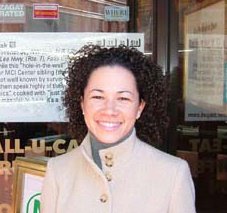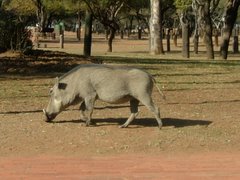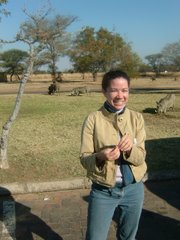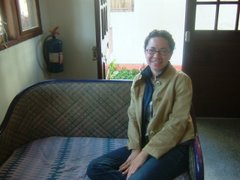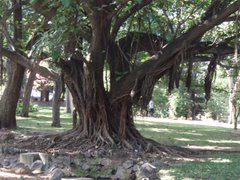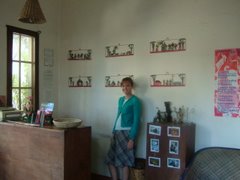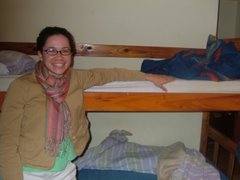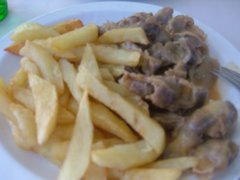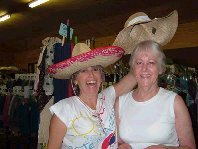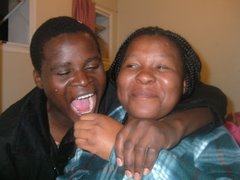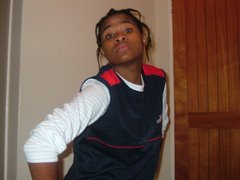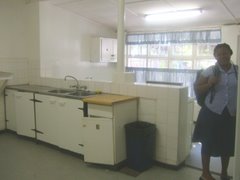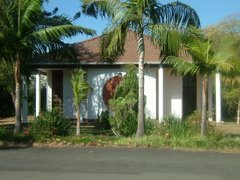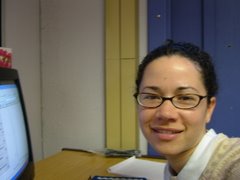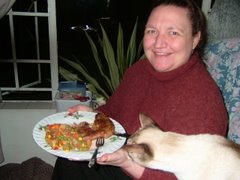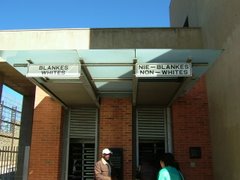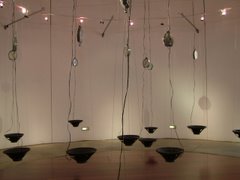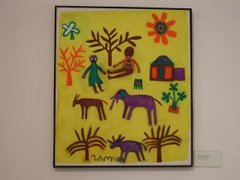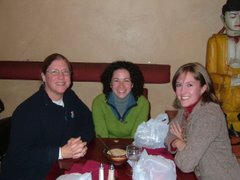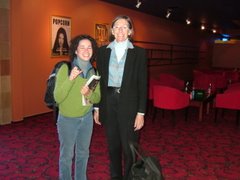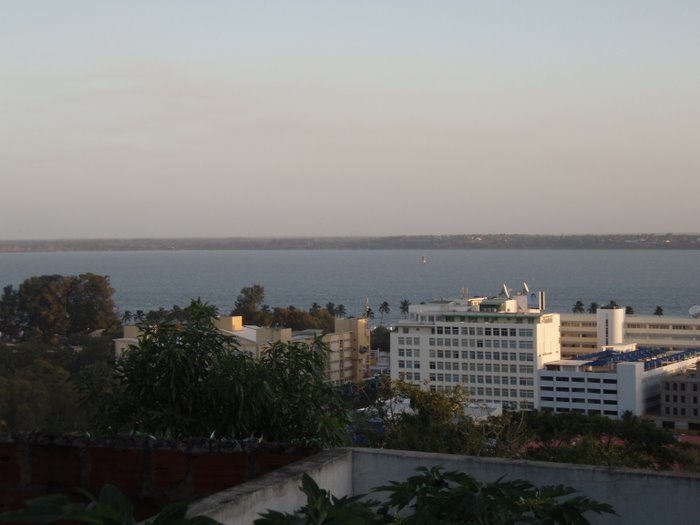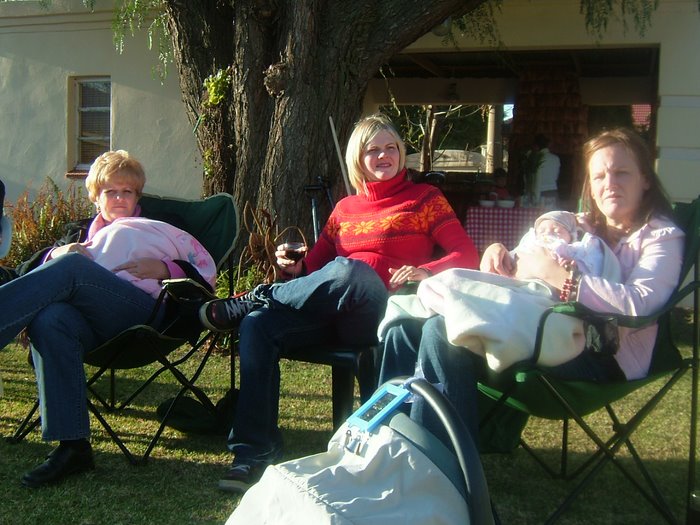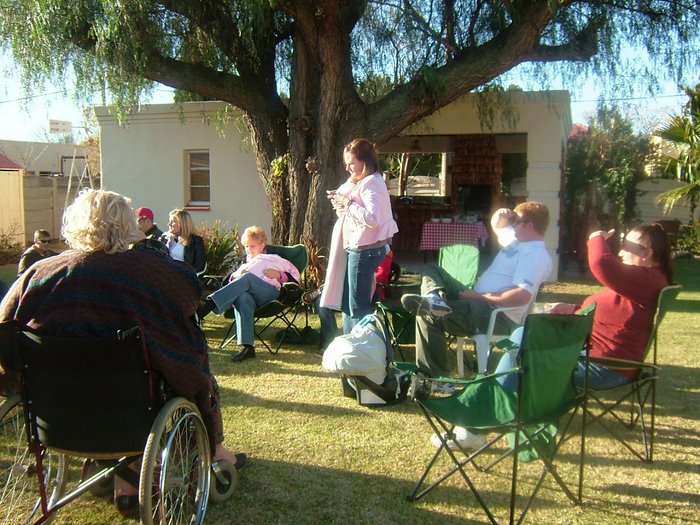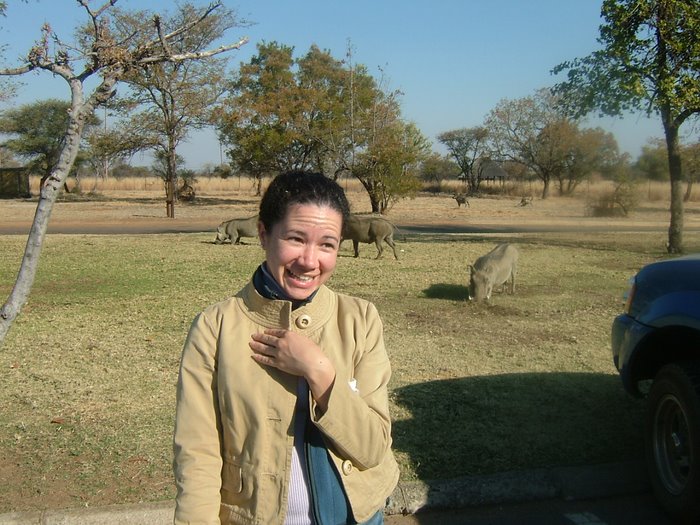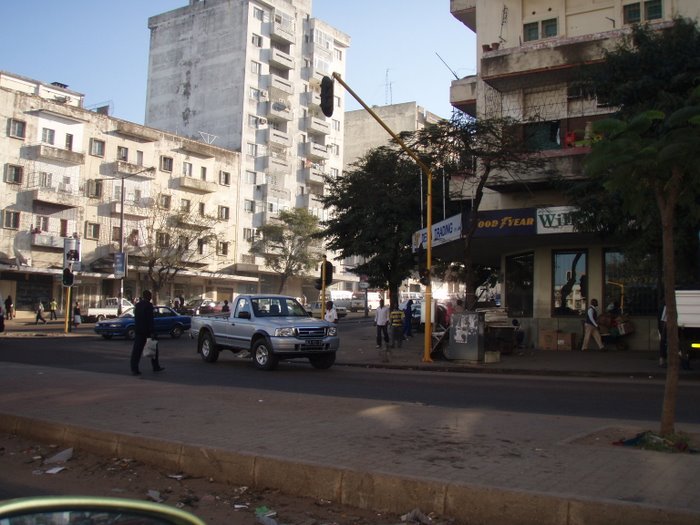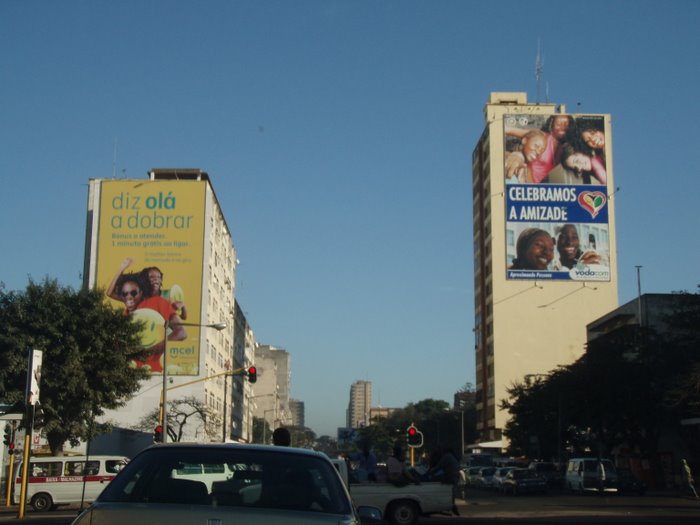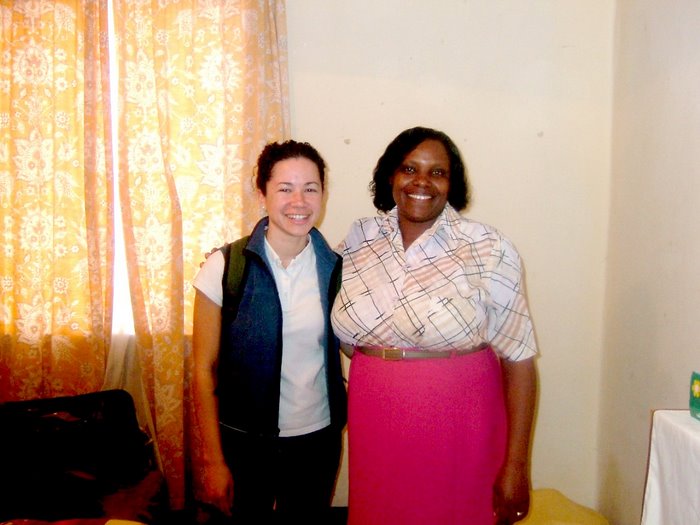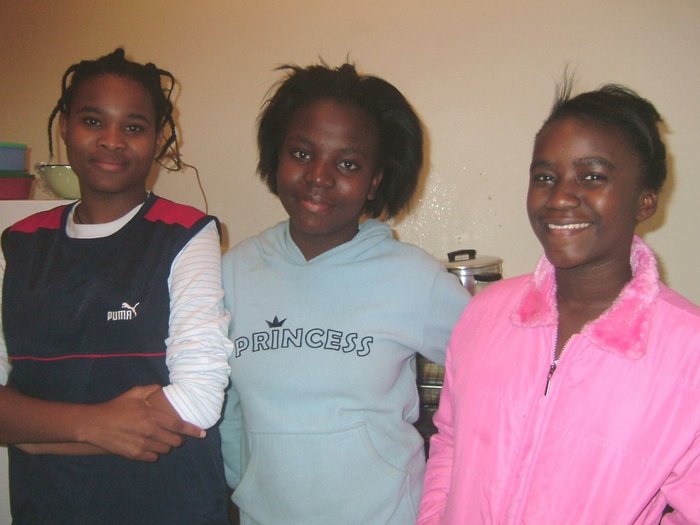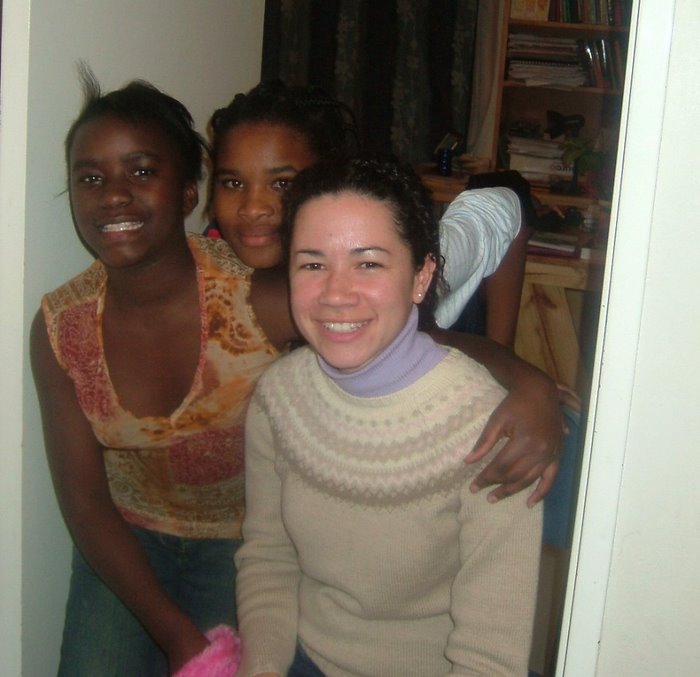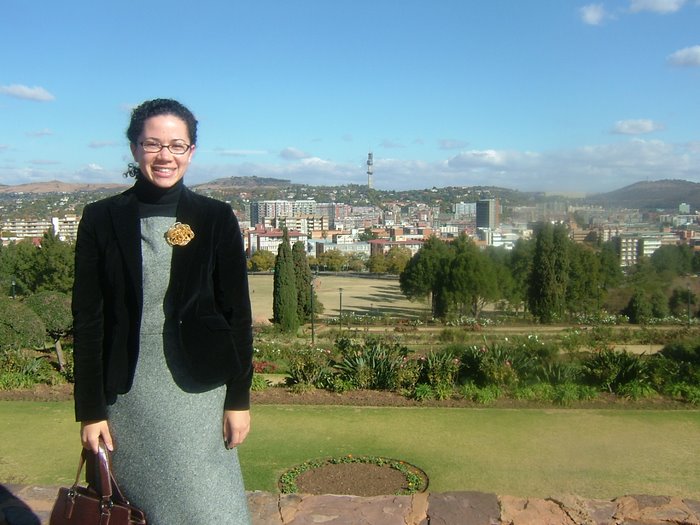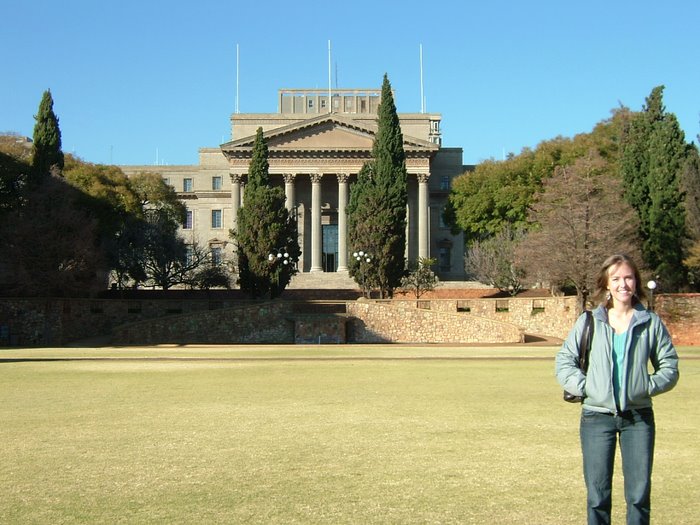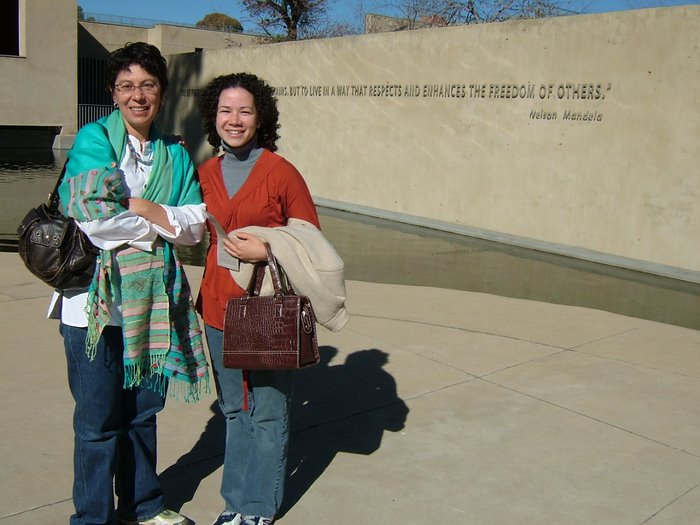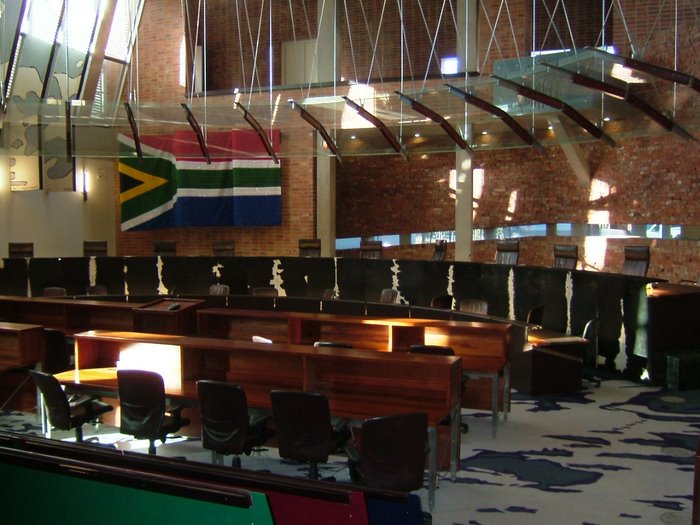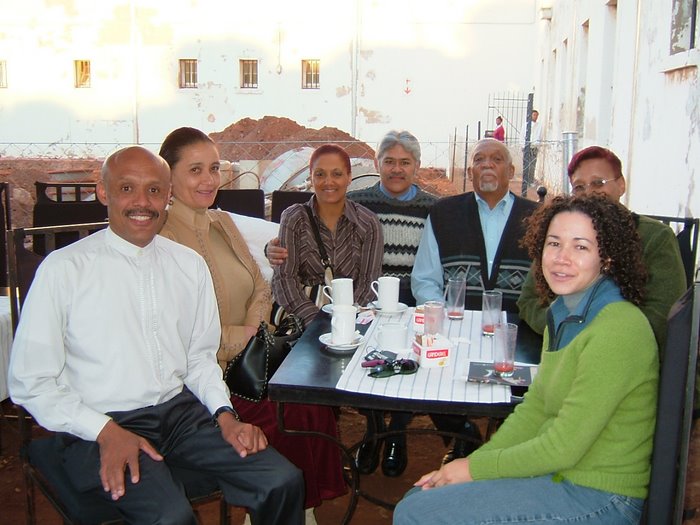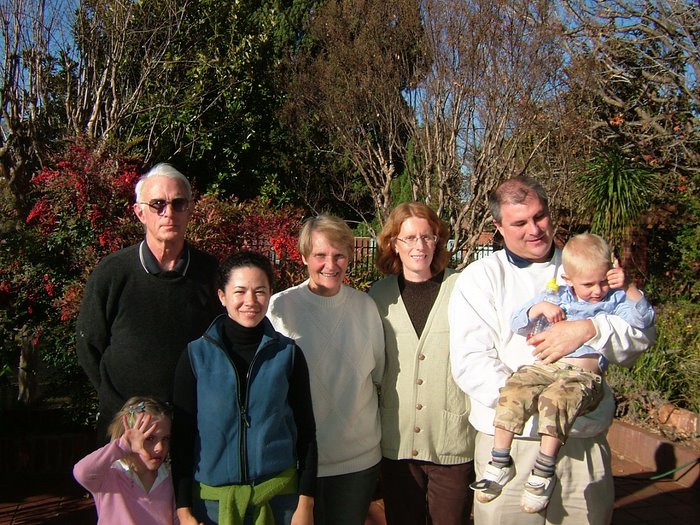Hello Friends and Family,
First, I want to say how nice it is to know that so many of you are keeping up with me via my blog. I should add a counter to my site and start soliciting advertisers, eh? : ) I thought I’d start off this blog entry by sharing my experiences from this past weekend. On Saturday, I met a friend and we drove into Jo’Burg to go to the Apartheid Museum. It was a first time for both of us, so we each experienced it with fresh eyes. My first impression was a curious one. The Apartheid Museum was located in Gold Reef City, a tourist attraction boasting casinos and an amusement park. The museum was literally adjacent to a roller coaster with kids screaming at being flung upside down. That was weird and seemed slightly inappropriate given the sensitivity of the subject matter to which the museum was dedicated. More interesting still, when I told co-workers that I had visited the apartheid museum this past weekend, several responded, “oh, the tourist attraction.” I was really surprised by this because having grown up in Birmingham, it’s practically expected of you that you should visit the civil rights museum at least once. In fact, visit the civil rights museum is an act of personal education and paying respect, so it was odd that some here should see visiting the apartheid museum as a tourist attraction. It made me wonder if perhaps the memory of apartheid is too fresh here for that sort of historical apreciation? Nevertheless, the museum was so well done that I’d recommend it to anyone interested in going. My friend and I purchased our tickets and began to enter the museum … at which point I was personally confronted with the offensiveness that was apartheid. You see, upon purchasing your ticket, you are handed a pass card which corresponds with your race and upon attempting to enter the museum, an employee takes your pass card and directs you to enter into one of two revolving doors – one for whites and one for non-whites. Ugh. To be honest, I felt embarrassed at having to choose and let others critique my choice, and I bristled at being directed into one of two entrances. It was then, before I had even entered the museum, that I was confronted with the ridiculousness of apartheid. And I was reminded that apartheid may have been a series of laws, but it was also something more intangible – a constant feeling of humiliation. I wouldn’t say I was humiliated, just irritated. What was most interesting is that I wasn’t the only one to feel this weird sense of heightened awareness at my race. I say this because I noted that several of the white students in line ahead of me chose to go through the “non-European / non-white” revolving door. I couldn’t help but wonder if that was because they didn’t want to in any way send the message that they were proud of the privilege of being able to walk through the white door. So we entered the museum and saw 2 temporary exhibits (one of the role of women in combating apartheid, and the other on the youth resistance movement). The latter exhibit was very timely because it was June 16th, or Youth Day. http://en.wikipedia.org/wiki/Hector_Pieterson We also saw a permanent exhibit explaining how it is that Johannesburg came to be the city that it is today. I hadn’t before realized that Jo’Burg, much like Birmingham, grew up around mineral wealth (gold) and so it was interesting to note yet another similarity between the two cities and subsequent race dynamics created when there’s a need for manual labor to harvest these rich reserves.
The museum was intended to resemble a prison with its revolving metal bar doors and use of earthy materials like rock, metal, stone, wire, and cement, but it wasn’t chilly or eerie, just thoughtfully and elegantly done. In fact, the creepiest thing in the whole museum was what I call “the apology room.” (see picture below). This Irish artist had turned this round room with a 20 ft. tall ceiling into a monument of eternal apology. Suspended from the ceiling were weights and speakers and projected from the speakers in overlapping sequence was a voice that said, over and over and over again, “I’m sorry. I apologize. I’m sorry.” I didn’t really get the artists’ intention in this work because the room was a sterile, cold, hollow white room with these mechanical apologies resounding over and over again, but they offered absolutely no healing power. The room was hollow and so were the apologies, and so the artwork almost seemed to make a mockery of this monument. But outside the room was a video of the artist attempting to explain his work, and he said something that really struck me. He said something to the effect of … “Was an apology really what you wanted?” And then I realized that the apology is most powerful for the person who extends it, just as forgiveness is really a healing for the person who gives it. After the saturation of information at the museum and a trip to the Oriental Market for dinner with friends, on Sunday I traveled to the African Craft Market. Upon entering, there’s this narrow corridor with merchants flanking you on both sides trying to sell you things. I had hoped to be able to casually browse, but this was no Parisian’s : ) The second you make eye contact, the pressure buy trap has begun : ) and then you’re in the awkward situation of having to say no a million times. On the upper level, however, there’s more room to breathe, less crowds, and this is where I learned to bargain :) The trick is to walk around, browse, make mental notes about what you like, and then leave. Then once you’ve taken a mental inventory, you come back and pick up the item you want. My friend Lisa prefers to ask, “how much is this?” and then bargain down from there, but I have a different approach. I like to pick it up and say:
“Can I have this for 20 rand?” (Note: 20 rand divided by 6 = $3). That’s a really low bid, and if it’s a nice item, the person will usually look at you in disgust and say,
“No, no, no! That’s worth 150 rand!
So then I respond, “Well, how about 40 rand?”
The merchant replies, “No, perhaps I give you special morning price of 100 rand.”
“Hmm … what about 50 rand.”
“No, that is worth much more than 50 rand. I cannot go lower than 80 rand.”At this point, you’ve reached a strategic ground where you can either keep negotiating until you reach the middle, or you can do the “double-up.” That’s where you say, “Okay, how about I give you 80 rand, but I want this one and that one.” I had really good success with the double-up on Sunday and moreover, I had fun doing it. I also got some fun presents for friends and afterwards, we had lunch in the market equivalent of the “food court,” which is a series of picnic benches under a covered area where they sell food from temporary stations. There was a gyro station, a Thai food station, a sushi shop with no refrigerator, a coffee station, and a Coke products stand. The refrigeration thing shouldn’t come as a surprise because that happens all over the place. Even in very western-looking grocery stores complete with 8 or 9 different brands of cheese, they don’t refrigerate eggs. That was a surprise to me, but thus far, I haven’t fallen ill or dropped dead :) Okay, by now I’m sure only my mother is still reading this long blog entry, so I’ll stop :) Take care and I love you all.
Tuesday, June 19, 2007
Subscribe to:
Comments (Atom)
